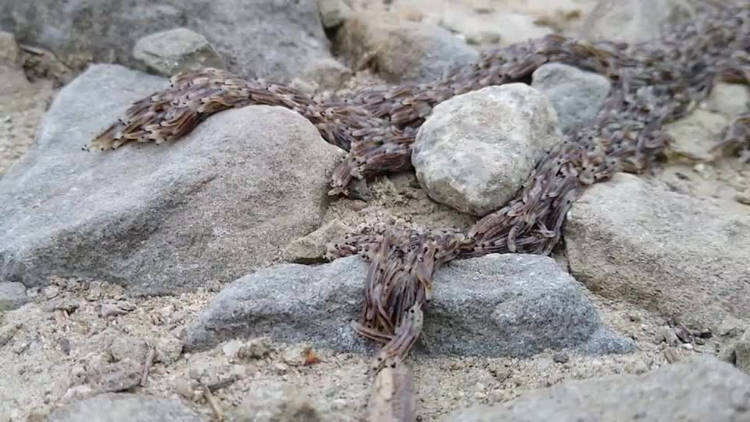The larvae of a certain species of gnats have been known to migrate by assembling into a large snake-like shape numbering tens of thousands of individuals and crawling on the ground as one. The bizarre phenomenon is known as “Pleń” in Poland and “Heerwurm” in Germany.
As far back as the 17th century, the larvae of sciaria militaria, a species of dark-winged fungus gnats found throughout Central Europe, have been observed moving on the ground as a giant slithering unit ranging from 50 centimeters to a reported 10 meters. Called Pleń by the Polish people who first documented the rare and poorly understood phenomenon, this method of migration numbers between a few thousand to several tens of thousands of tiny larvae. They crawl on the ground as one unit, towards an unknown goal that scientists have so far only speculated on.

Photo: Imgur
The first mentions of Pleń in Polish documents date back to the 17th century, in Silesia. Back then, people either associated the phenomenon with misfortune or with prosperity and happiness. Those in the latter category collected the larvae, dried them, and then spread them on their lands and in their barns, to ensure a bountiful harvest.
About 100 sightings of Pleń have been reported in Poland after the Second World War, the most recent of which have even been caught on camera. The phenomenon has been observed in the Carpathian Mountains, the Biebrza marshes, and the Białowieża Primeval Forest.
Although the first reports of the Pleń phenomenon can be traced back to Poland, it has since been observed in other parts of the world as well, including in the forests of Russia, Lithuania, Sweden, Norway, Bavaria, Hungary, Switzerland and North America.
Science has yet to offer a complete explanation for the phenomenon, but according to currently available information, the movement of thousands of tiny larvae as a giant unit simply ensures a greater speed. The larvae crawl over each other like a conveyor belt. The larvae on top of the pile crawl over their neighbors, who are also moving, meaning they move twice as fast, but then they also have to spend time at the bottom once they make their way to the top of the mass.
Overall, if the mass is made up of two layers, it moves about 1.5 times the speed of an individual, and if the number of layers is larger, the speed increases as well. It’s simply a more efficient way of getting around. As for the ultimate goal of this migration, lack of food or the drying effect of sunlight have been theorized by scientists.












